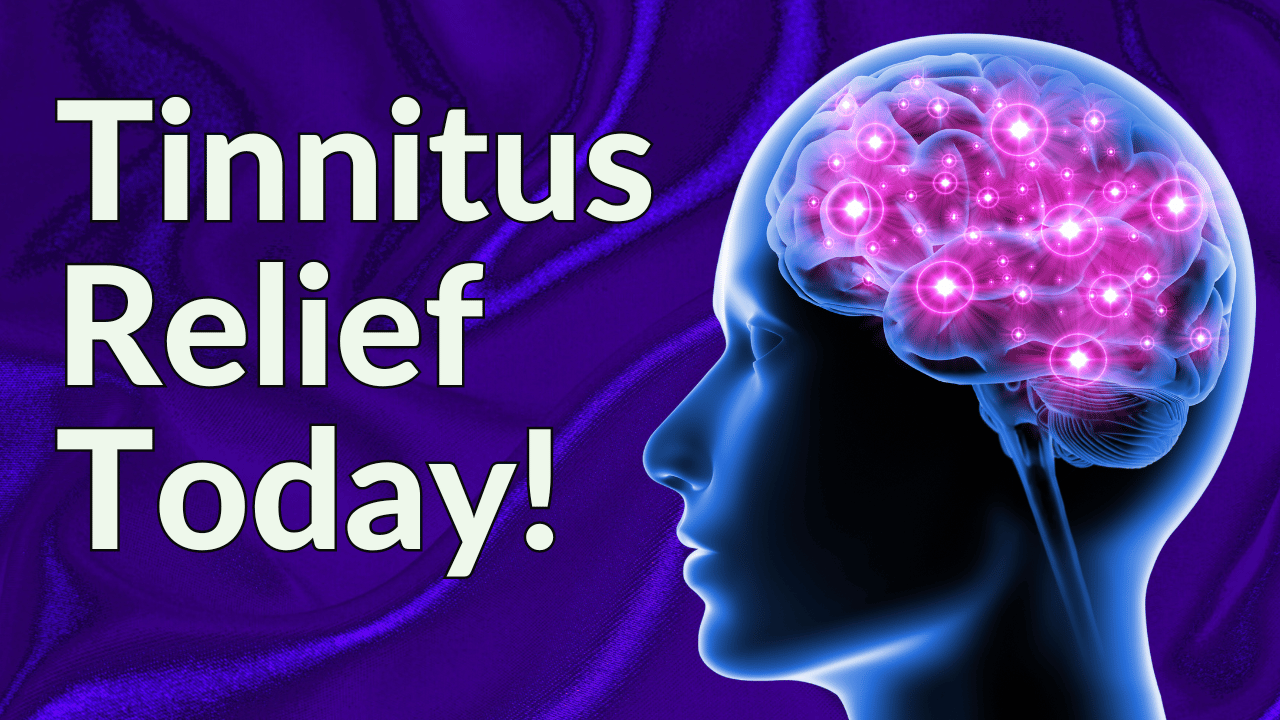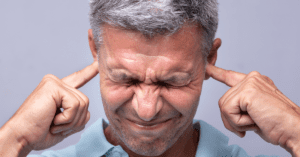Otosclerosis is a disease of the ear that results in abnormal bone growth. These growths affect function of the middle ear bones, leading to issues with hearing – including tinnitus.
What Causes Otosclerosis?
Let’s start by breaking down the three main parts of the ear: the outer ear, the middle ear, and the inner ear. The outer ear is visible, funneling sound into the eardrum and beyond. Next comes the middle ear, which is a chain of three small bones that connect the eardrum to an opening in the inner ear’s bony capsule. Last is the inner ear that supports both hearing and balance.
Inside the middle ear is the tiny stapes bone, which connects the middle and inner ear. The stapes sways back and forth with eardrum movement, transferring sound waves from the outside environment and thus enabling us to process sound.
"Treble Health helped me reduce my tinnitus by about 80%, and now I can live my life again!"


"Treble Health helped me reduce my tinnitus by about 80%, and now I can live my life again!"
– Steve D.
Book a free consultation to learn which Treble Health solution is right for you. Join Steve and thousands more who have found lasting tinnitus relief.
Otosclerosis is a condition in which there is abnormal bone growth in the inner ear that creeps towards the stapes bone. This growth restricts movement of the stapes, resulting in a less effective transfer of sound to the inner ear. Left untreated, the condition may lead to hearing loss, as well as impact how sound is received in the auditory nerve. And though it typically begins in one ear, progressive otosclerosis usually affects both ears over time.
There are numerous possible causes for otosclerosis. Research suggests it may be triggered by autoimmune responses, vascular diseases, metabolic disorders, auditory trauma or fractures inside the ear, hormone changes, and viral illnesses such as measles. There are also some genetic factors that appear to play a role, though not in all cases. Unfortunately, no direct or singular causality has yet been identified.
Symptoms
There are several symptoms associated with otosclerosis. By far the most common is tinnitus, which impacts nearly three in four patients. “Conductive” hearing loss is similarly common – a gradual hearing impairment resulting from the middle ear bones’ ability to conduct sound to the inner ear. The hearing loss may worsen over time, and can include sensorineural components – hampering the way sensory cells and organs in the inner ear send sound to the auditory nerve. For about one in four sufferers, dizziness may also occur with otosclerosis if the bone growth impacts the vestibular organs of the inner ear, which control balance.
How Is Otosclerosis Diagnosed?
Otosclerosis is diagnosed with an audiology evaluation and radiologic imaging. A hearing test, usually ordered by an ENT doctor, may show results consistent with otosclerosis, such as hearing loss. Further testing of the middle ear system will also often show signs of otosclerosis. A CT scan can also be useful in diagnosing the condition, as it allows for a high-resolution view of bony structures. The procedure is painless and takes no more than thirty minutes.
Treatments
While there are no known cures for otosclerosis, there are several promising management and treatment options, including observation, surgery, medical therapy, hearing aids, and cochlear implants.
Typically – depending on the severity of the condition – a doctor may start with a “wait and see” approach. You’ll be checked regularly and observed over time to ensure only moderate progression. This is especially advisable for individuals whose otosclerosis has not caused any debilitating symptoms that prevent daily activities.
Another non-invasive option may be pharmacological. Sodium fluoride (or, less commonly, biphosphonates) can be prescribed to slow or stabilize the course of active otosclerosis. This can also prevent further sensorineural hearing loss in the inner ear. However, this treatment is not used much anymore, due to side effects and limited evidence showing its effectiveness.
Surgery on the stapes bone – in the form of a stapedectomy or stapedotomy – is among the more evidence-based alternatives shown to provide relief. Both forms of surgery involve placing a prosthesis in the middle ear to replace the function of the non-moving stapes bone. The operation generally takes one to two hours, and most people go home the same day of surgery.
Clinical Outcomes for Tinnitus and Otosclerosis Treatment
It’s important to note that surgical outcomes are generally incredibly successful at treating hearing loss that results from otosclerosis, with one study boasting a success rate of 95% and sustained improvement over 14 years. These positive outcomes are also observed in reducing tinnitus in patients with otosclerosis. Another study found that, following a stapedotomy, more than half of patients experienced a significant reduction in tinnitus severity, and 37% reported complete resolution of their tinnitus (also notable is that no change in tinnitus severity was reported in one in three patients, and an increase was observed by 7%). These results echo similar research that saw a complete reduction in tinnitus in 55% of surgical cases. In aggregate, these positive results for tinnitus patients offered meaningful improvements in quality of life.
Like all surgical intervention, however, there are caveats and risks. One study suggests that older age groups may experience worsening tinnitus following surgery. Individuals with comorbidities may also find that surgery is not a feasible option.
A more advanced surgical procedure is cochlear implants, usually recommended for those with very severe hearing loss. While they may help improve tinnitus, implants are typically pursued following other attempts at management and treatment.
Lastly, it’s worth considering hearing aids – an effective option to help address hearing loss from otosclerosis and the perception of tinnitus.
While this may not always be the case for people with otosclerosis – one small study showed that surgery outperformed hearing aids in minimizing tinnitus symptoms related to otosclerosis – hearing aids are known to improve quality of life for those with hearing loss and can be either an alternative to surgery, or used by those who are not yet candidates for surgery. Additionally, hearing aids may be necessary even after surgery for many patients, as some degree of hearing loss can persist even after surgery.
In any case, more research is needed to determine what effect hearing aids have on tinnitus from otosclerosis specifically. Nevertheless, as the tinnitus in otosclerosis is related to hearing loss, it’s expected that hearing aids will be as effective on tinnitus in these cases as they are in other causes of tinnitus. Regardless of the cause of your tinnitus, Treble Health can help. Take this short survey to get started with a personalized treatment plan, and start your path to habituation.
Determining Next Steps
As with any medical condition, the best starting point is to seek medical insight from a licensed professional. If you believe you’re showing signs of otosclerosis, including a sensation of fullness in your ear, hearing loss, or tinnitus, schedule a visit with your local ENT or audiologist so that you can be properly assessed and diagnosed. From there, co-create a care plan that fits your lifestyle, values, and available treatments.
Next Step: Book Free Consultation
- 75% of patients reduced their tinnitus within three months after following our recommendations.
- "I feel like Treble Health literally gave me my life back." - Randy S. (verified customer)
- Join thousands of people who have reduced their tinnitus after scheduling a free consultation.


















